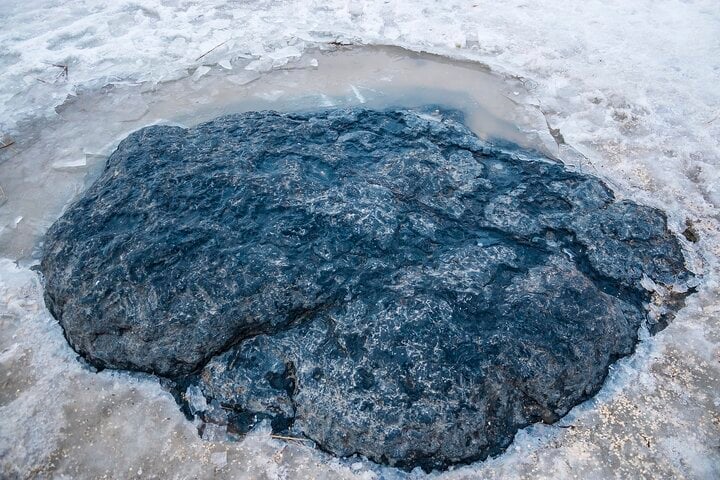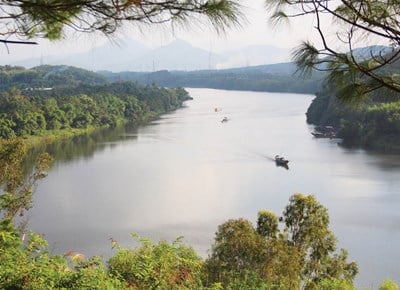In Plescheevo Lake, near the city of Pereslavl-Zaleski, Russia, a strange rock has given scientists a headache. The unusual thing about the rock is that it is never covered with snow in winter, and when it rains, the rock turns blue just like the lake.
No one knows the origin of this rock, there are many rumors about its origin.

The scene around Plescheevo Lake, near the city of Pereslavl-Zaleski, Russia. (Photo: Sputnik)
According to local legend, this rock is called the Blue Rock. It was once located on top of a mountain not far from Lake Plescheevo. On this mountain, a pagan tribe lived. This rock was where the shamans set up altars and offered sacrifices to the gods.
One day, the blue stone was pushed from the top of the mountain to the shore of Lake Plescheevo. The locals believed that the stone had the power to cure their illnesses and started to hold a festival, dancing around the stone to pray for blessings.
The stone was later buried underground by monks at a nearby monastery in the late 17th century. But 12 years later, it is unclear how the mysterious stone appeared on the surface.
In 1788, the authorities decided to lay this 12-ton stone as the foundation for the church. The construction team used sledges to transport it across Pleshcheevo Lake, but the frozen lake in the middle of winter suddenly cracked and the sledge sank with the stone.

Local fishermen spotted a blue rock slowly moving along the bottom of the lake. (Photo: Sputnik)
Soon, local fishermen noticed the emerald green rock slowly moving along the bottom of the lake. Each year it moved closer to shore. In 1858, the “sunken man” was standing on the shore about 300 meters from where he had been carried away. Since then, no one has dared to touch the rock.
Scientists have been struggling to decipher the blue rock for years and have come up with many theories. One suggests that the rock floated ashore due to the strong currents of the river that flows into the lake.
Others argue that the rock is frozen in ice each winter and moves along the spring melt. But how ice or water could have moved the 12-ton boulder and dragged it ashore remains an unanswered question.
Some researchers believe that the rock contains powerful mysterious energy, and is itself part of an unknown ecosystem.
Quoc Thai (Source: Sputnik)
Source





![[Photo] Closing of the 11th Conference of the 13th Central Committee of the Communist Party of Vietnam](https://vstatic.vietnam.vn/vietnam/resource/IMAGE/2025/4/12/114b57fe6e9b4814a5ddfacf6dfe5b7f)
![[Photo] Overcoming all difficulties, speeding up construction progress of Hoa Binh Hydropower Plant Expansion Project](https://vstatic.vietnam.vn/vietnam/resource/IMAGE/2025/4/12/bff04b551e98484c84d74c8faa3526e0)

























































































Comment (0)